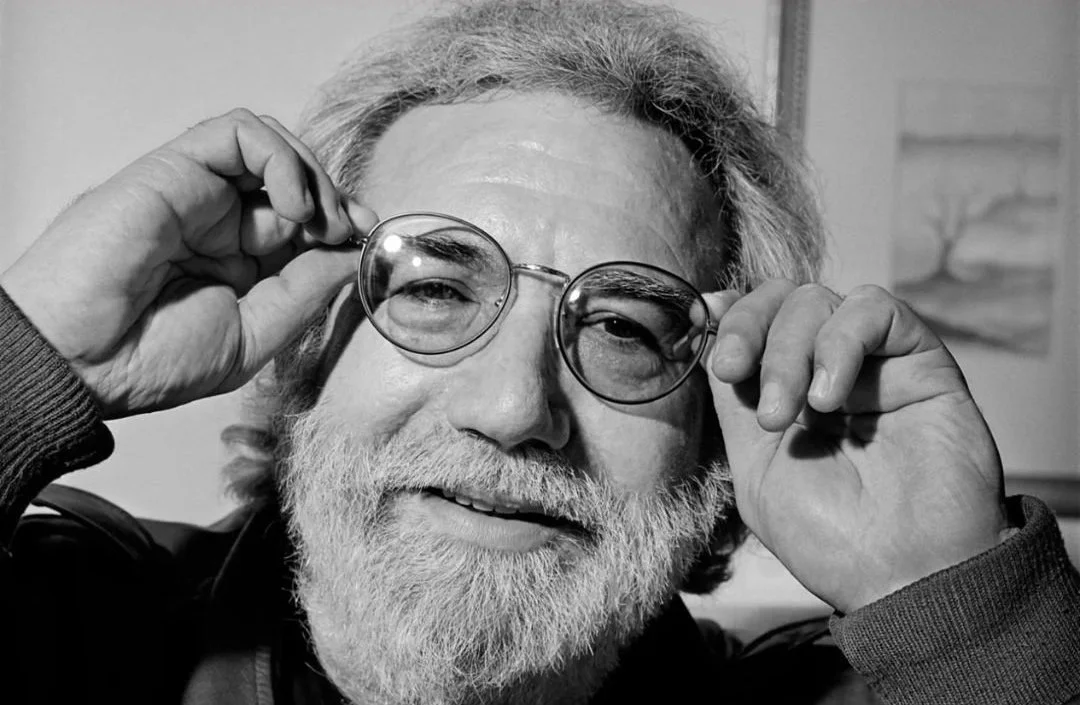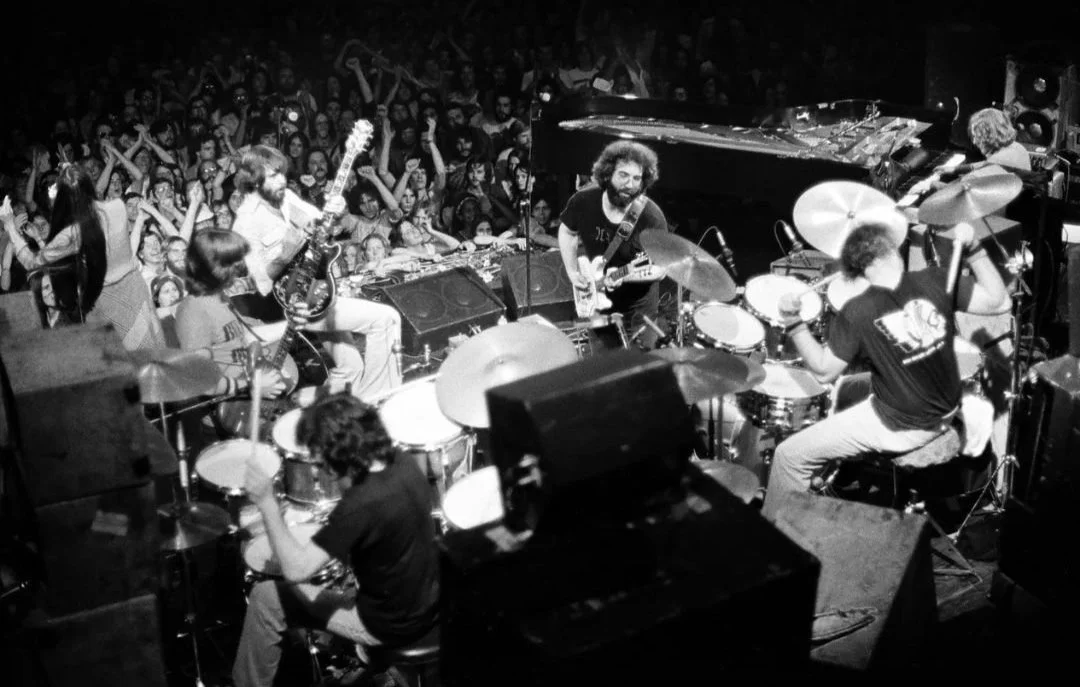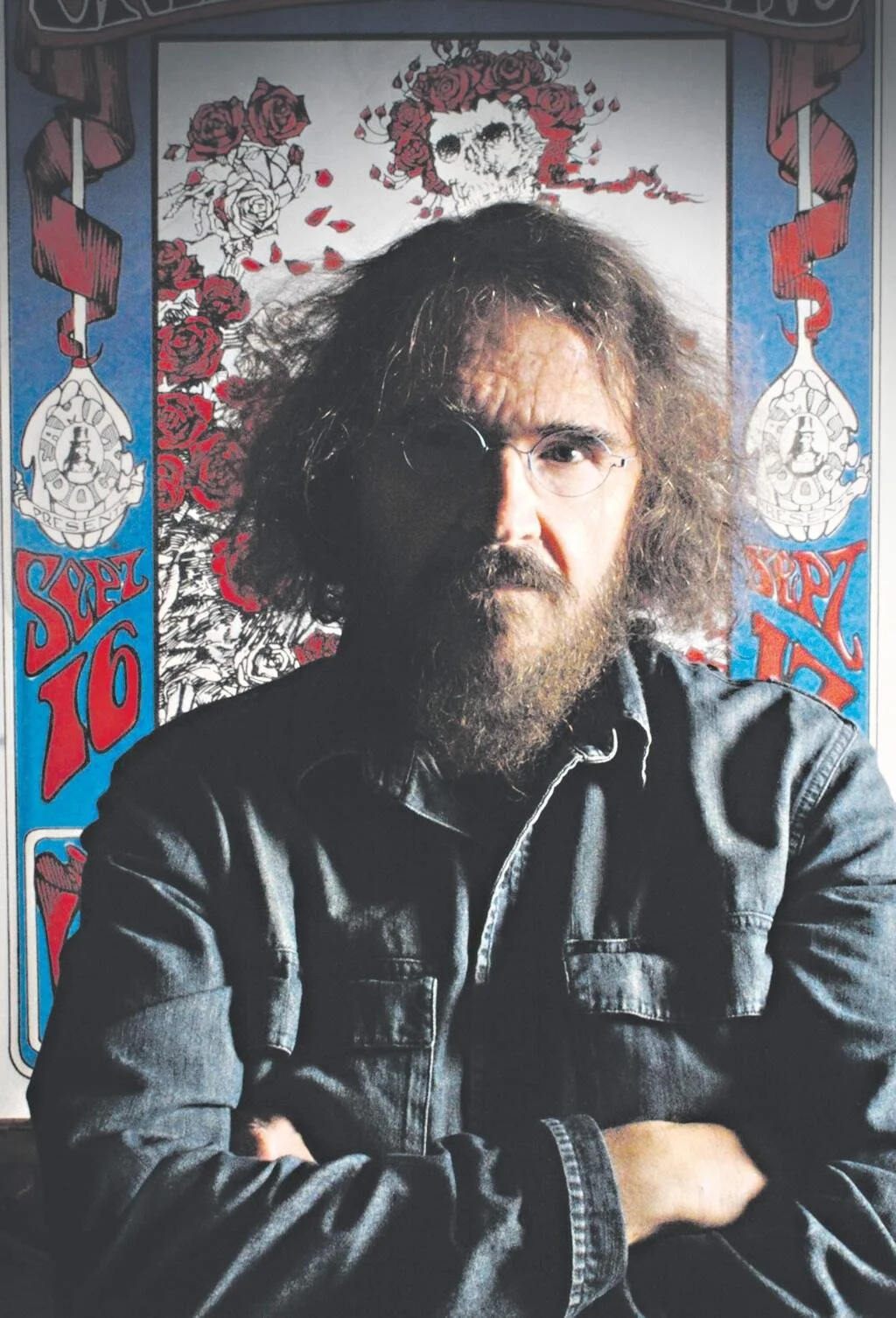Legacy Of The Thread - Primarily Dead’s Jesse Lockwood On The Dead’s Clothing Culture
Some have hobbies, while others passionately and obsessively collect anything and everything on their favorite and most cherished subject(s). This is the case for Miami, Florida-based Deadhead, archivist, and vintage seller of all things Grateful Dead, Jesse Lockwood. A fan whose cosmic connection to the Dead is universally undeniable, what makes Lockwood’s collection, and passion project, Primarily Dead, so incredible, is the deadly dedication to the band’s harmonious history and iconic impact on society through their mostly bootlegged merch. The electrifying ecosystem surrounding the Dead, specifically in the 1980s and 1990s, in parking lots around the country, is just as infamous as the shows they played. From the band’s crucial community and cosmic commitment to making ‘unofficial’ merch, taping shows, and carrying the tonal torch for all to hear and wear, their culture and history have only grown stronger since the passing of the late, great Jerry Garcia in the summer of 1995. While peering into the fragile fibers of the vintage clothing world, one may notice the varying prices, rarities of certain items, and climate in which they dwell, but for Lockwood, it’s all about the music. These garments speak of an endless treasure trove of melodic memories that continue to carry on through their brilliant graphics, stains, pinholes, and scars worn proudly by those who celebrate the past, present, and future of The Dead’s touch on the human experience.
How did you initially connect with music, specifically The Dead, and its ever-expanding culture, and continued influence on society over half a century later? Did you have the opportunity to see them live while Jerry was still alive? What are your favorite periods in the band’s radically rich history?
I initially connected with the Dead through my father. We always had music playing in my house as a kid, and it was either Grateful Dead, Pink Floyd, Led Zeppelin, or Black Sabbath from my father or New Wave (Tears for Fears, Roxy Music, INXS) from my mother. My dad had “Workingman’s Dead” on vinyl, so that remains my earliest memory, but my real interest and later obsession started when I first heard “Terrapin Station” as a teenager. It felt like the most magical song ever written, pulling me deeper into the Dead’s discography. I was born too late to be a part of the tape-trading scene, so much of my exposure came from record stores/vinyl, CDs, and then, later, streaming. The Grateful Dead’s music lands in two main themes in my mind, and I’ve been drawn to both since I was a kid. There’s the Americana/Wild West/gambling/debt-evading/train riding side and the magical/other-worldly/deep/lush/transcendental side. I grew up wanting to be a professional poker player, so the first part always resonated with me. As my experiences grew and my mind expanded, that mystical world that the band created felt like home. I was born in 1982, which means I was 13 when Jerry died and, sadly, never got to see the Grateful Dead. Growing up in Massachusetts, the Dead were ubiquitous, though. The Northeast felt very hippie back in the mid-90s. 1977 is my favorite year. “Hollywood Sportatorium (Dick’s Picks Volume 03”) is my ‘Barton Hall.’ It’s a perfect show end-to-end. “To Terrapin: Hartford ’77” has my favorite “Terrapin Station” ever. Jerry plays a really gritty but very moving first solo. The whole vibe in ‘77 is very jammy/dancy, which I tend to lean towards. I also love 1990 – the band sounds very tight despite their respective issues. Nassau Coliseum's “Eyes of the World” instantly puts me in a good mood. I can’t imagine a song sounding better. All of Spring 1990 is great. Also, I love the mid-late 80s because they introduced this trippy electronic pulsing percussion sound that Mickey would work into a lot of songs, and I’m a real sucker for it. I can’t get enough. There’s a FOTM where he does it A LOT, and it’s my favorite thing ever.
What intrigues you the most about The Dead and its evolution with each passing decade, especially through the 1980s and 1990s? This seems to be the most dominant in your collection. The fact that The Dead were as influential on stage as they were celebrated in the thousands of venue parking lots across America is something I think resonates with a ton of people who never had the chance to see them play.
No band is more drenched in magic than the Dead. And it’s that magic that inspired SO much epic artwork. The band started with amazing artists like Stanley Mouse, Rick Griffin, Alton Kelley, etc. This body of work gave the fans and artists a great foundation to expand. Both the band and the art scene evolved year after year, decade after decade. You can see the artistic evolution of creativity really starting to blossom in the mid-80s and then exploding between 1987 and 1995. Most of the shirts I sell land within this window due to the variety during this period for each tour and show. The band’s staying power is a testament to not only the music but the FEELING that came with being at the shows and in the parking lots. It’s a feeling people still chase today because it represents a sense of true freedom that can’t be found in many other places.
“The band’s staying power is a testament to not only the music but the FEELING that came with being at the shows and in the parking lots. It’s a feeling people still chase today because it represents a sense of true freedom that can’t be found in many other places.”
What about the merch side that connects you to the band’s spirit, which is survived through t-shirts that make up the important collection known as Primarily Dead? As a collector of everything Dylan, what a miracle clothing manages to stand the test of time, especially some of that early material from the 1970s.
Grateful Dead merchandise is a collector’s dream. There is a never-ending amount of variety. Just when I think I’ve seen them all, something incredible shows up. My love for the band initially drew me to the merch, but the magic of the art has kept me going all these years. The lot/fan art, in the 70s and 80s, came from a place of purity in that the shirts were made to celebrate a love for the band. They were sold cheaply to pay for travel and show tickets. And they were traded from fan to fan, much like tapes and other ephemera. Every single shirt could tell an incredible story. The lot shirts hold a special place in my heart and always excite me when I find them. Many were created for one tour, one run of shows, or even one single show. To have a shirt made in the 80s that was only sold in a parking lot, that one day is a crazy feeling. That’s why I respect them so much. I can picture the person selling it, see the scene in my mind, smell the weed in the air, feel the heat of the midday sun.
How did you essentially get into collecting and selling vintage Dead t-shirts? As collectors, the stories of acquiring certain items can sometimes be just as epic as where they came from in the first place. Do you have any core stories from your collecting days that stand out the most? Even though Primarily Dead is a business, what do you hope people learn and pull from the brand while purchasing or simply interacting with your collection? Is there anything else you would like to share further with the readers?
I was drawn to the artwork of classic rock as a young kid. We used to open an album, stare at the art, read every word, and analyze it all. The iconography of the Grateful Dead is the best, and I feel that’s an objective fact. The Steal Your Face is the best logo of all time. It’s perfect. In addition, the band has many recognizable characters and themes, from bears to crows to roses and dancing skeletons, aliens, fractals, and on and on. Collecting Grateful Dead shirts is a treasure hunt for me. I get excited EVERY time a package comes to my house. And I’ve had thousands of packages sent to me. I’ve developed friendships with people I’ve bought shirts from, and those scenarios are meaningful to me. One guy owned a pizza place his whole life. The place was decked out with old Dead posters and song references. He sold me 100 or so of his old shirts that he no longer wanted, and we have now been texting back and forth for years, talking about old shows and some of his crazy stories. He sent me a giant Jerry tapestry that hung in his pizza shop for 20 years as a gift. I now use it as a decoration in my booth whenever I vend. Other than those relationships, my favorite situation is buying big collections. I recently purchased a collection of 500 shirts from one person. Having them all at my house is surreal. I have to assume I have possessed more Grateful Dead shirts than anyone else ever (?). I saved 100K shirt pictures from all my sales and collections. I hope people realize that this is mainly a labor of love for me. Yes, it makes money, but this is not my job. It’s more of a side project that I run as a ‘team of one.’ I have desired to share things that I think are cool, have history and provenance, and mean something. I have desperately tried to avoid the cheese that comes with requiring engagement on Instagram to grow. I hope that is clear. I run this account with integrity because I care. Whenever I ship a shirt, I picture the person opening the package. I want them to be excited and happy. I bumped into a guy at the Sphere wearing one of my shirts, and he was so pumped about it that he hugged me. That’s what it’s all about for me.







